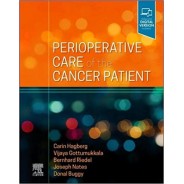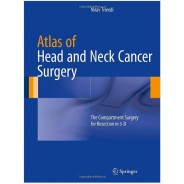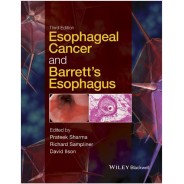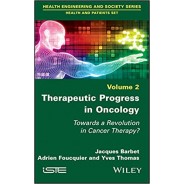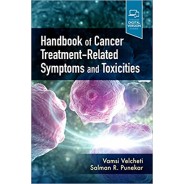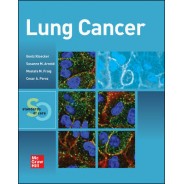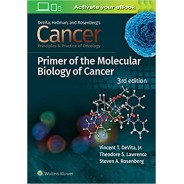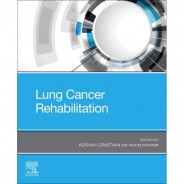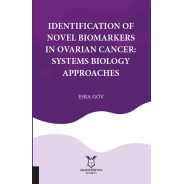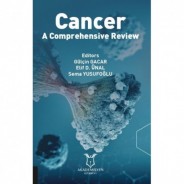TABLE OF CONTENTS
Preface xi
About the Companion Website xiii
1 Cancer Epidemiology 1
1.1 Cancer Incidence and Mortality 1
1.2 Childhood Cancer 4
1.3 Global Epidemiology 5
1.4 Cancer Survival Rates 8
1.5 Summary and Conclusions 12
Further Reading 12
2 Cancer Histopathology 13
2.1 Cancer Morphology, Phenotype, and Nomenclature 14
2.2 Apoptosis 16
2.3 Necrosis 22
2.4 Autophagy and Others 23
2.5 Summary and Conclusions 24
Further Reading 25
3 Carcinogenesis 27
3.1 Initiation 27
3.2 Promotion 29
3.3 Progression and Environmental Carcinogenesis 30
3.4 Cell Cycle 31
3.5 Summary and Conclusions 33
Further Reading 33
4 Molecular Biology of Cancer 35
4.1 Oncogenes: Disruptors and Instigators 36
4.2 Cellular Oncogenes 39
4.3 Viral Oncogenes 41
4.4 Altered Oncogenic Products 42
4.5 Biological Carcinogens 44
4.6 Tumor Suppressor Genes 46
4.7 Familial Cancers and Cancer Syndromes 50
4.8 Summary and Conclusions 52
Further Reading 52
5 Cancer Metastasis 53
5.1 Detachment from the Primary Tumor 54
5.2 Migration of Cancer Cells from Primary Tumor 55
5.3 Intravasation of Tumor Cells into Vessels 57
5.4 Metastatic Transport 60
5.5 Extravasation 61
5.6 Growth of the Metastatic Tumor Mass 63
5.6.1 Cancer Dormancy 63
5.6.2 Extracellular Matrix of the Tumor Microenvironment 64
5.6.3 Seed and Soil 65
5.7 Summary and Conclusions 66
Further Reading 67
6 Health Professionals and Cancer Treatment 69
6.1 Pathology 69
6.2 Radiology 70
6.3 Biopsies 72
6.4 Surgical Treatment 73
6.5 Oncology Pharmacy 74
6.6 Oncology Nursing 75
6.7 Artificial Intelligence and Healthcare 75
6.8 Summary and Conclusions 75
Further Reading 76
7 Principles of Cancer Chemotherapy 77
7.1 Staging, Treatment, and Monitoring 77
7.2 General Types of Chemotherapy 79
7.3 Biomarker Uses and Limitations 82
7.4 Pharmacogenetics, Pharmacogenomics, Pharmacokinetics, Pharmacodynamics, and Personalized Medicine 86
7.5 Summary and Conclusions 87
Further Reading 88
8 Cytotoxic Compounds 89
8.1 Alkylating Agents 89
8.2 Intercalating Agents 94
8.3 Topoisomerase Blockers 104
8.4 Tubulin Disruptors 109
8.5 Summary and Conclusions 113
Further Reading 113
9 Antimetabolites and Hormonal Blockers 115
9.1 Nucleic Acid Analogs 115
9.2 Folate Analogs 118
9.3 Amino Acid Blockers 120
9.4 Hormone Modulators 121
9.5 Estrogen Antagonists 124
9.6 Aromatase Inhibitors 127
9.7 Antiandrogens 127
9.8 Endocrine Therapy 128
9.9 Summary and Conclusions 129
Further Reading 130
10 Cancer Research 131
10.1 Gel Electrophoresis Methods 131
10.2 Polymerase Chain Reaction 132
10.3 Molecular Cloning 133
10.4 Enzyme-Linked Immunosorbent Assay, Immunohistochemistry, and Immunofluorescence 134
10.5 Mass Spectroscopy and Proteomics 135
10.6 Genomics, Transcriptomics, and Metabolomics 136
10.7 Microarrays 137
10.8 Cell Culture and Exogenous Expression Strategies 138
10.9 Protein Expression and Targeting 141
10.9.1 Targeting RNA. 143
10.9.2 Targeting the Genome 145
10.10 Animal Models 147
10.11 Delivery Systems 149
10.12 Resources 151
10.13 Summary and Conclusions 152
Further Reading 153
11 Clinical Trials 155
11.1 Clinical Trial Design 158
11.2 Clinical Trials Governance and Quality Assurance 161
11.3 Clinical Trial Ethics 166
11.4 Clinical Trial Study Schema 168
11.5 Measurement of Clinical Endpoints, Response, and Outcomes 169
11.6 Local and National Organization of Clinical Trials 169
11.7 Summary and Conclusions 173
Further Reading 174
12 Tumor Hypoxia 175
12.1 Effects of Hypoxia on Chemotherapy 177
12.2 Energy Reprogramming and the Warburg Effect 178
12.3 Hypoxia-Inducible Factor 181
12.4 Lactate Dehydrogenase and Carbonic Anhydrase 183
12.5 Hypoxic Vascularization and Imaging 185
12.6 Bioreductive Drugs 189
12.7 Summary and Conclusions 192
Further Reading 192
13 Antiangiogenic and Antivascular Agents 193
13.1 History of Antiangiogenic Chemotherapy 193
13.2 Endogenous Integrin Blockers 195
13.3 Matrix Metalloproteinase Inhibitors 197
13.4 Synthetic Integrin Blockers 202
13.5 The Return of Thalidomide 204
13.6 Vascular Disrupting Agents 205
13.7 Antiangiogenic Antibodies 207
13.8 Summary and Conclusions 210
Further Reading 210
14 Protein Kinase and Ras Blockers 211
14.1 Signal Transduction 211
14.2 Receptor Tyrosine Kinase Blockers 214
14.3 Nonreceptor Tyrosine Kinase Blockers 216
14.4 Receptor Serine/Threonine Kinase Blockers 220
14.5 Nonreceptor Serine/Threonine and Multiple Kinase Blockers 223
14.6 Ras and PLC Blockers 226
14.7 Summary and Conclusions 228
Further Reading 228
15 Modulating Global Gene and Protein Expression 231
15.1 Stress Protein Inhibitors 231
15.2 Proteasome Inhibitors 234
15.3 Ubiquitin Ligase Inhibitors 237
15.4 Histone Deacetylase Inhibitors 238
15.5 DNA Methylation Inhibitors 241
15.6 Summary and Conclusions 242
Further Reading 243
16 Stem Cells – Telomerase, Wnt, Hedgehog, Notch, and Galectins 245
16.1 Telomerase Blockers 246
16.2 Wnt Blockers 250
16.3 Hedgehog Blockers 252
16.4 Notch Blockers 254
16.5 Galectin Blockers 257
16.6 Summary and Conclusions 258
Further Reading 258
17 Immunotherapy and Oncolytic Viruses 261
17.1 Immunization 264
17.2 Immune Checkpoint Blockers 266
17.3 Chimeric Antigen Receptor T-Cells 268
17.4 Oncolytic Viruses 270
17.5 Summary and Conclusions 275
Further Reading 275
18 Pharmaceutical Problems in Cancer Chemotherapy 277
18.1 Manifestation of Toxicity 277
18.2 Regimen-Related Toxicity 282
18.3 Secondary Malignancies 283
18.4 Drug Resistance 284
18.4.1 Multiple Drug Resistance 284
18.4.2 Enhanced DNA Repair 286
18.4.3 Alteration of Drug Targets 287
18.5 Pharmaceutical Complications 287
18.5.1 Extravasation 288
18.5.2 Local and National Extravasation Guidelines 290
18.6 Phlebitis and Venous Irritation 290
18.7 Health and Safety 291
18.8 National Guidance on the Safe Administration of Intrathecal Chemotherapy 291
Further Reading 292
Index 295




